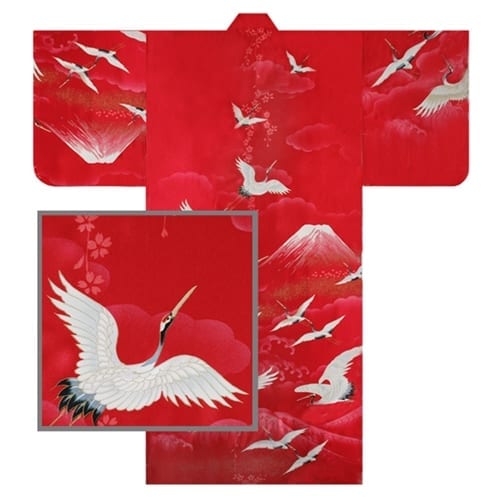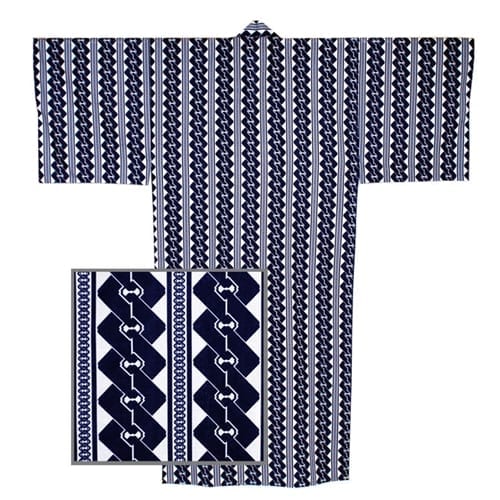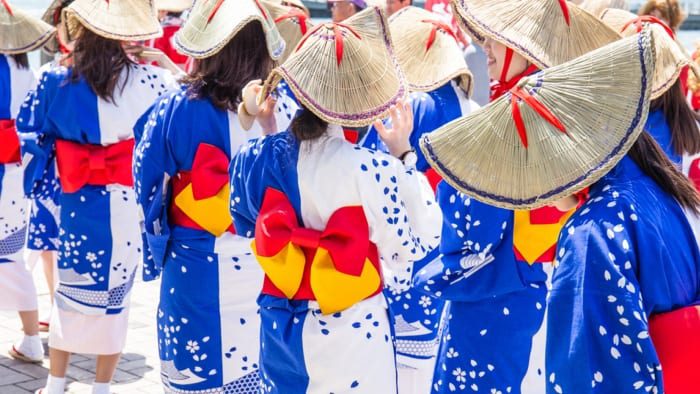 A kimono can showcase a diverse range of beautiful art, but many patterns and images hold deep-rooted meanings in Japanese tradition. While some modern designs draw inspiration from Western society, certain recurring motifs have profound symbolism:
A kimono can showcase a diverse range of beautiful art, but many patterns and images hold deep-rooted meanings in Japanese tradition. While some modern designs draw inspiration from Western society, certain recurring motifs have profound symbolism:
Flowers:
- Chrysanthemum: Symbolizes long life and rejuvenation, adopted as Japan’s official emblem and associated with the imperial family.
- Karakusa: A pattern of flowers and stems symbolizing eternity and family legacy.
- Sakura: Cherry blossoms, representing spring and the fleeting nature of beauty.
- Tsubaki: Camellia or tea flower, with different colors conveying various meanings like red for love and white for unrequited desire.
- More Flower Patterns: Matsuba symbolizes steadfastness and wisdom, Paulownia represents divine guidance and femininity, Bamboo signifies longevity, Iris protects from malevolent spirits, Bellflower symbolizes genuine love, and Peony embodies wealth, fortune, and honor.

Animals:
- Crane: Revered for longevity and good luck, formerly exclusive to nobles’ garments.
- Peacocks: Portray love and kindness.
- Plover: Represents strength and persistence due to its migratory nature.
- Tortoise: Symbolizes longevity and a good life, associated with living for 10,000 years in Japanese myth.
- Koi: Represents success in life, with a legend suggesting that a koi turning into a dragon signifies achievement.

Geometric Designs:
- Shippou: Represents the seven treasures of Buddhist lore.
- Seigaiha: Overlapping circles symbolizing the flow of life and fortune through time.
- Hexagons: Taken from tortoiseshell plates, symbolizing strength and longevity.
- Waves: Symbolize the sea’s strength and divine power, often used on war banners.
- Shima: Chain-like patterns representing strong community bonds.
- Koushi: Lattice pattern with thick lines for power and thin lines for elegance.
Other Patterns:
- Kumo: Depicts clouds or rippling air, symbolizing an upward motion towards the heavens and the watchful eyes of the gods.
- Yagasuri: Arrow shapes representing steadfastness and determination.
- Sayagata: An interlocking set of manji representing life and strength from Buddhist lore.
- Yukiwa: Depicts the Japanese concept of a snowflake.
- Igeta: Square shape symbolizing a well, associated with life and luck.
- Uroko: Interlocking triangles resembling dragon or snake scales, offering protection against evil.

Explore our wide selection of Kimono patterns. For any queries, feel free to email us!



